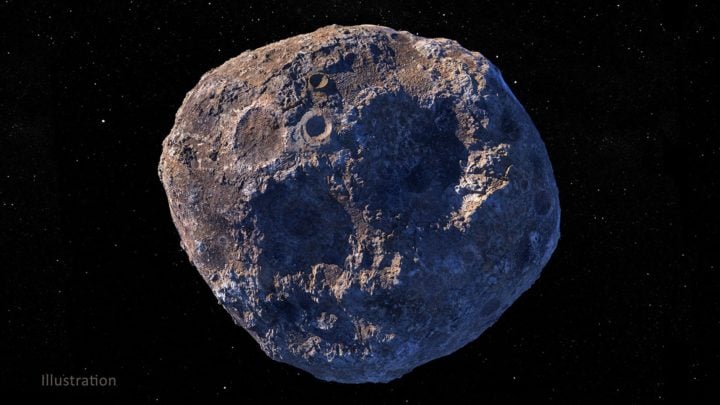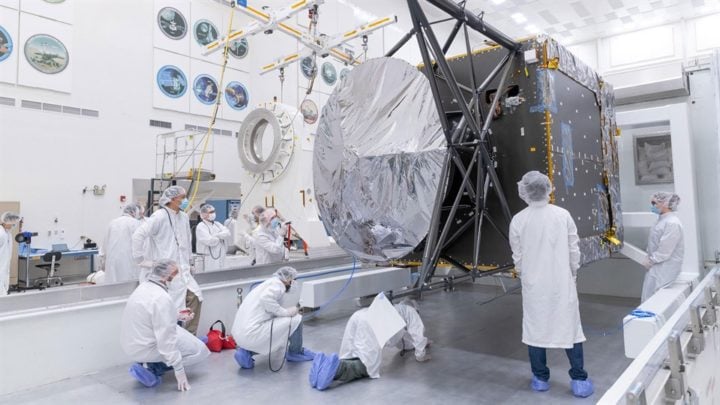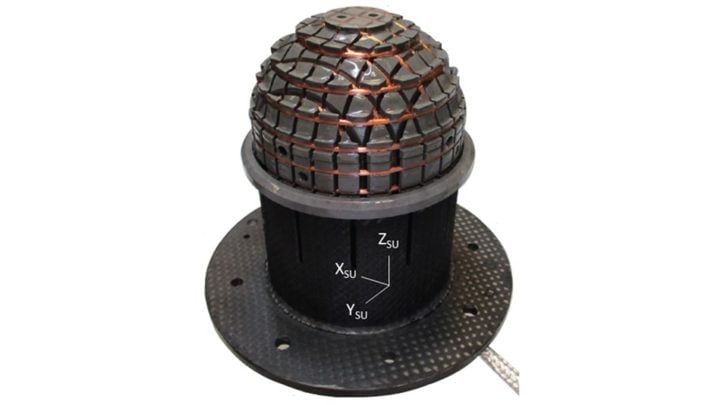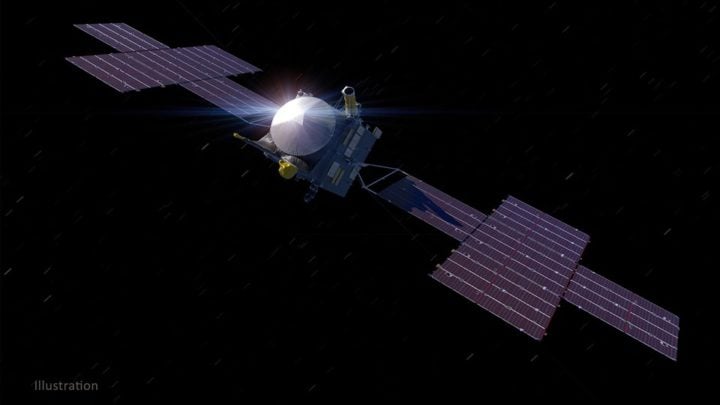NASA’s space mission to the asteroid Psyche—located in the asteroid belt between Mars and Jupiter—will help us better understand our own Earth. DTU supplies instruments that can measure and map the asteroid’s magnetic field.

The asteroid Psyche was discovered in and is located in the asteroid belt between Mars and Jupiter. Illustration by NASA/JPL-Caltech/ASU
At the very centre of the Earth is a metal core—so hot and deep down as unreachable and impossible to study directly. But we might learn more about it and the cores of other Earth-like planets by studying the asteroid Psyche.
Based on observations made through telescopes, it is believed to consist of 60 percent metal—probably an iron and nickel alloy. Looking a bit like a potato and measuring about 150×250 km, Psyche may be the innermost core of a planet that—following a violent collision with another object—was stripped of its outer crust.
NASA launched a mission to the asteroid Psyche om October 13, 2023. It is NASA’s fourteenth Discovery Program mission. Preparations started in 2017 with a launch planned for 2022, but due to the coronavirus, NASA could not complete the necessary testing in time. There are relatively few times of the year when the spacecraft’s voyage fits with the position of the planets.
Onboard the spacecraft will be three scientific instruments: an advanced imager for mapping and surface surveys, a gamma ray and neutron spectrometer that can measure what substances the asteroid consists of, and a magnetometer. The magnetometer has been built at DTU.
“We were invited to participate because our magnetometer has proven its unique ability to measure a very wide and extremely accurate magnetic field during several different space missions. In 2020, we began collaborating with the Massachusetts Institute of Technology (MIT), which heads the Psyche Magnetometry Investigation. And in 2021, we were the first to deliver a finished scientific instrument for the spacecraft, which is being built at NASA Jet Propulsion Laboratory in Pasadena,” explains José M.G. Merayo, a professor at DTU Space, co-investigator, and member of the Psyche mission’s scientific team.

Inspection of the Psyche spacecraft at NASA’s Jet Propulsion Laboratory in California, USA. Image credit: NASA/JPL-Caltech/ASU
Small instrument—wide range
The magnetometer is astonishingly small compared to its performance and capacity. The size of a tennis ball, the sensor is placed in a cylinder and with a pineapple-like surface. The grooves on the surface hold coils that generate a magnetic field similar to what you want to measure.
The spacecraft itself is taller than a human and weighs just under two tonnes without fuel and just under three with fuel, so the weight of the magnetometer, which is about 2 kg, is not much in comparison. But it is efficient and reliable, developed and built manually at DTU with a focus on every little detail.
We know absolutely nothing about Psyche’s magnetic field—whether it is large or small; whether it is a single large field or a scattering of smaller fields. The magnetometer must be prepared for all eventualities.
DTU’s magnetometer is unique in being able to measure the size and direction of magnetic fields with extreme precision. The strength of magnetic fields is usually measured in tesla. For very weak magnetic fields, measurements are stated in nanotesla (nano = 10-9). The Earth’s magnetic field measured in Denmark is approximately 54,000 nanotesla.
The magnetometer from DTU is capable of detecting extremely weak magnetic fields measuring down to just 0.025 nanotesla as well as extremely strong fields measuring up to 80,000 nanotesla.
This means that the weakest magnetic field measurable by the instrument is six million times less powerful than the strongest field it can measure. In other words: The instrument can detect magnetic fields ranging from the weak fields of solar wind to the stronger magnetic fields of large planets.

The sensor in the magnetometer is the size of a tennis ball placed in a cylinder and with a surface akin to a pineapple. Image credit: DTU
155 years in space
The spacecraft will be carrying two magnetometers to secure data if something should happen to one of them. But there is also another reason:
“The spaceship itself can generate a magnetic field, and we don’t want that to be included in our data. Therefore, the instruments will be installed on a boom some distance from the spacecraft, and with two sensors we will be able to detect signals from the spacecraft, which can then be deducted.”
“If the two sensors produce the same measurements, we can safely assume that what they are measuring is the natural magnetic field. If they produce different measurements, we can assume that this is down to the spaceship,” explains José Merayo.
José Merayo’s research group at DTU Space has built magnetometers for several missions that have measured the Earth’s magnetic field. Initially for the Ørsted satellite, then for the German CHAMP mission, and finally for the European Space Agency’s SWARM mission.
“All in all, our magnetometer has been in operation in space for a combined more than 155 years and has provided measurements for the geomagnetic field maps used for navigation and in the event of GPS crashing,” says José Merayo.
The magnetometers on the Psyche asteroid mission will be powered by the solar panels installed on the sides of the spacecraft and will start measuring immediately after launch. Of course, the instrument has undergone all manner of pre-launch testing, but we will need to check that everything works as expected, or whether something needs adjusting once it is actually in space.

An illustration that shows that the spacecraft looks like. Illustration by NASA/JPL-Caltech/ASU
Six-year voyage
Psyche is located in the asteroid belt between Mars and Jupiter, and on the 500 million km journey it may also be possible to obtain data about Mars’ surroundings as the spacecraft will be flying close to the planet; also, it will probably be possible to gain new knowledge about solar storms and their impact on the solar system. For this reason, the instrument will be operating throughout the voyage even though it could be turned on and off.
In six years’ time, the mission will hopefully reach the metal-rich asteroid, and the plan is then for the spacecraft to orbit the asteroid at altitudes of approximately 700, 500, 300 and 100 km for a combined period of more than two years.
This will generate lots of new data and hopefully increase our understanding of the creation of our solar system and of planetary magnetic fields.
“Why do some planets, such as Venus, have no magnetic field, while the magnetic fields of other planets, such as Jupiter, are stronger even that the magnetic field on Earth? In Psyche, we have a stripped-bare core that we can measure directly.”
“We believe that will tell us a lot. By learning more about Psyche’s magnetic field, we can also learn more about the workings of Earth’s magnetic field. The solar system is huge, and any data we can gather will help us understand it better—for example, how the weather in space helps protect our Earth,” says José Merayo.
There are no plans to bring the spacecraft back to Earth at the end of the mission. “Maybe it will land on Psyche, who knows? Or it will carry on orbiting the asteroid as a small artificial moon, says José Merayo.
Source: DTU

